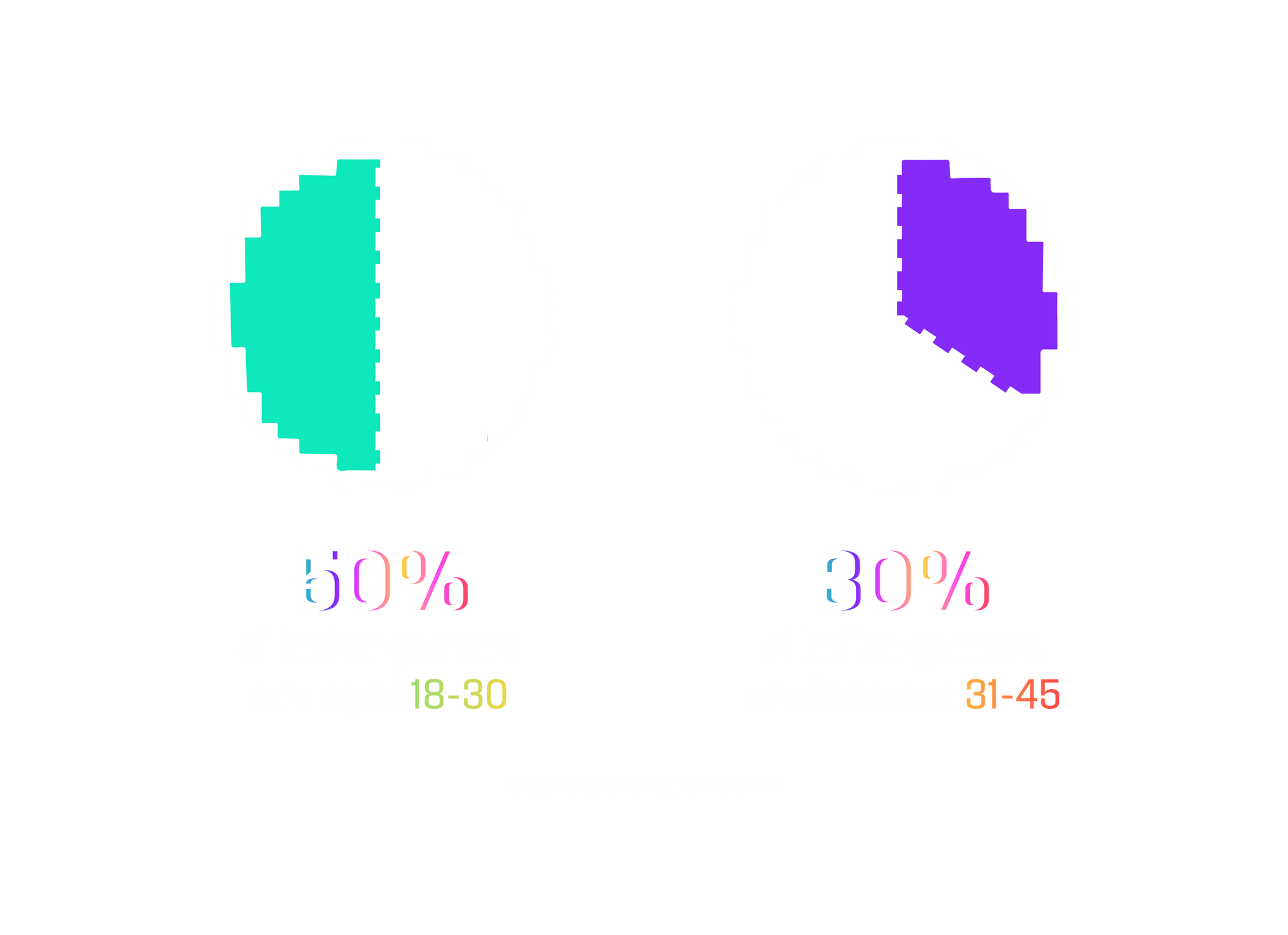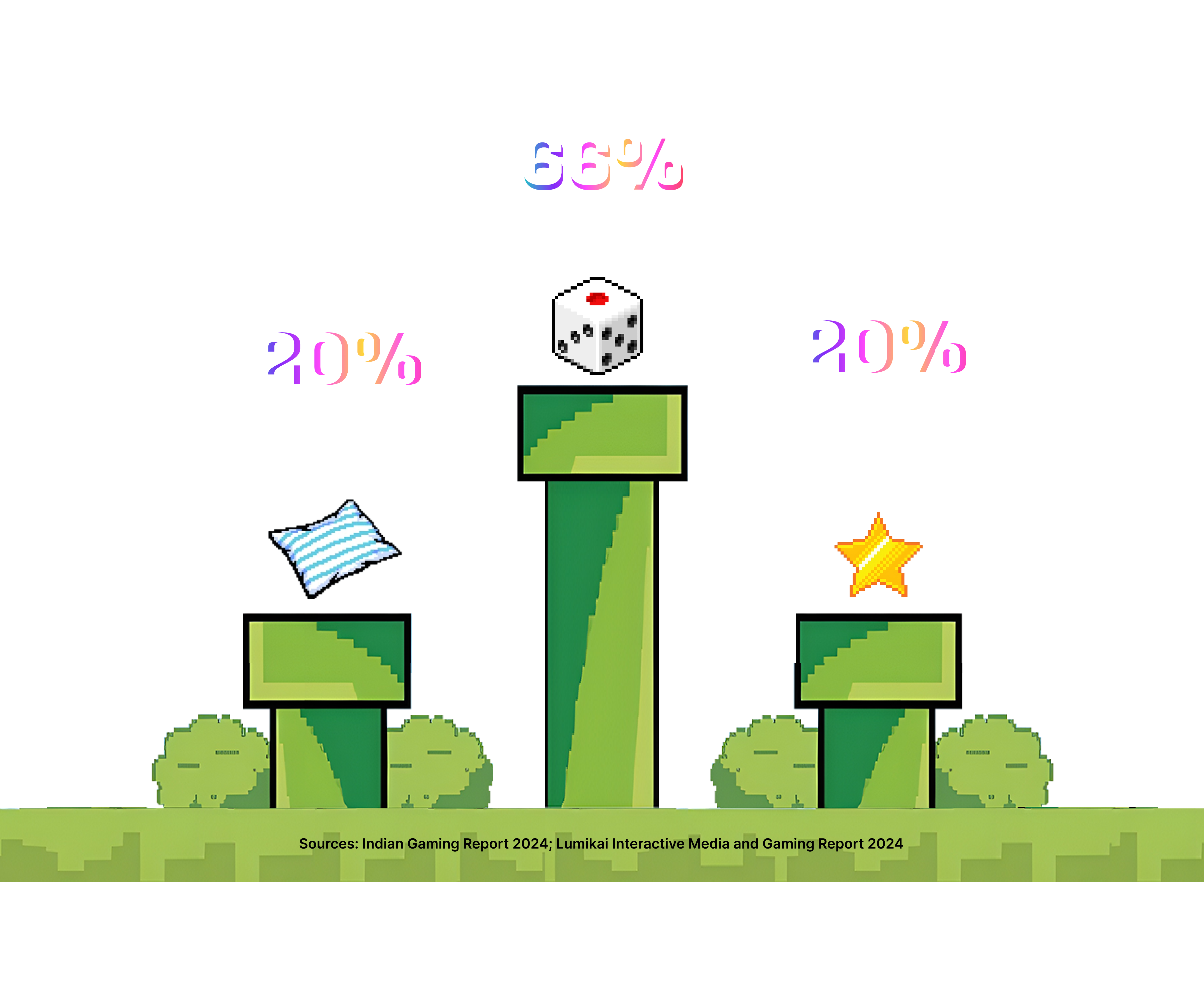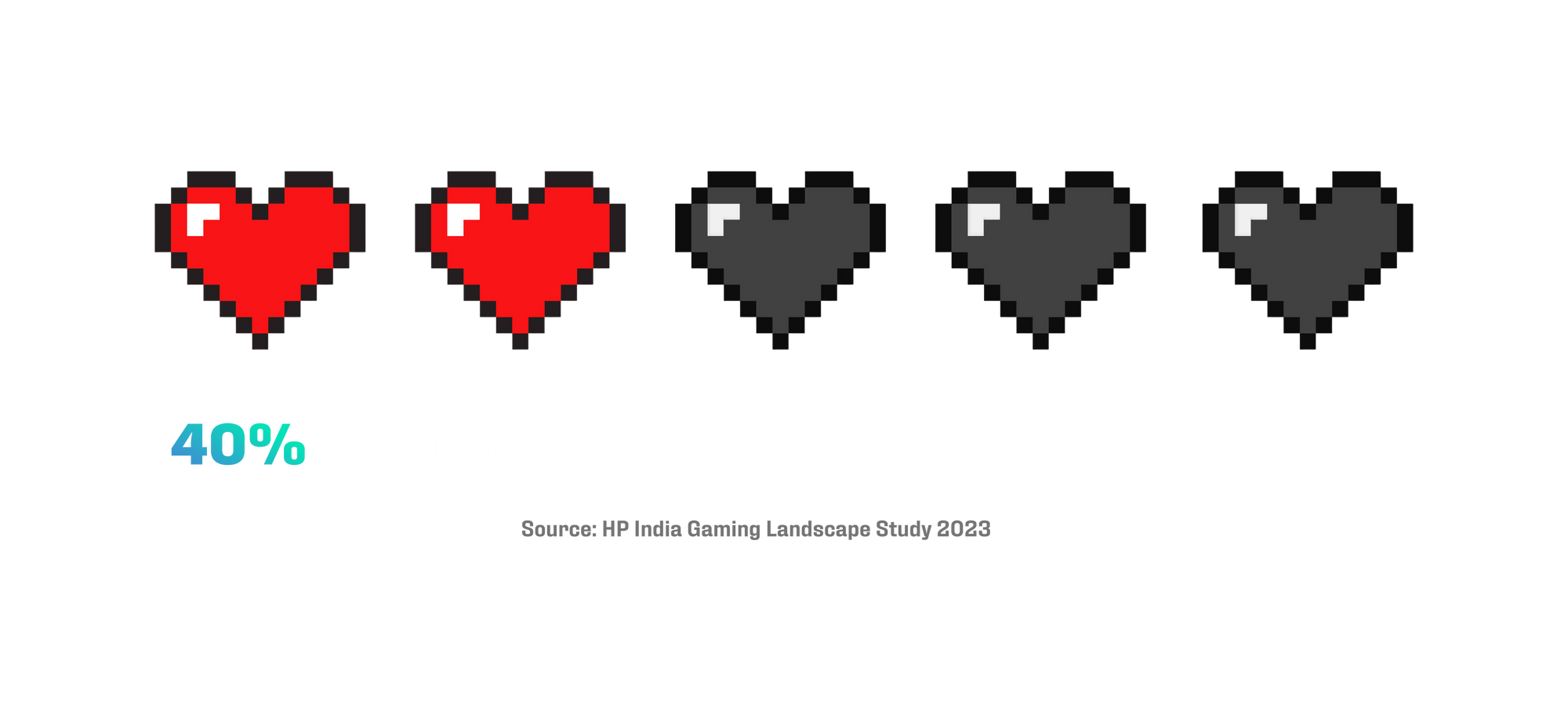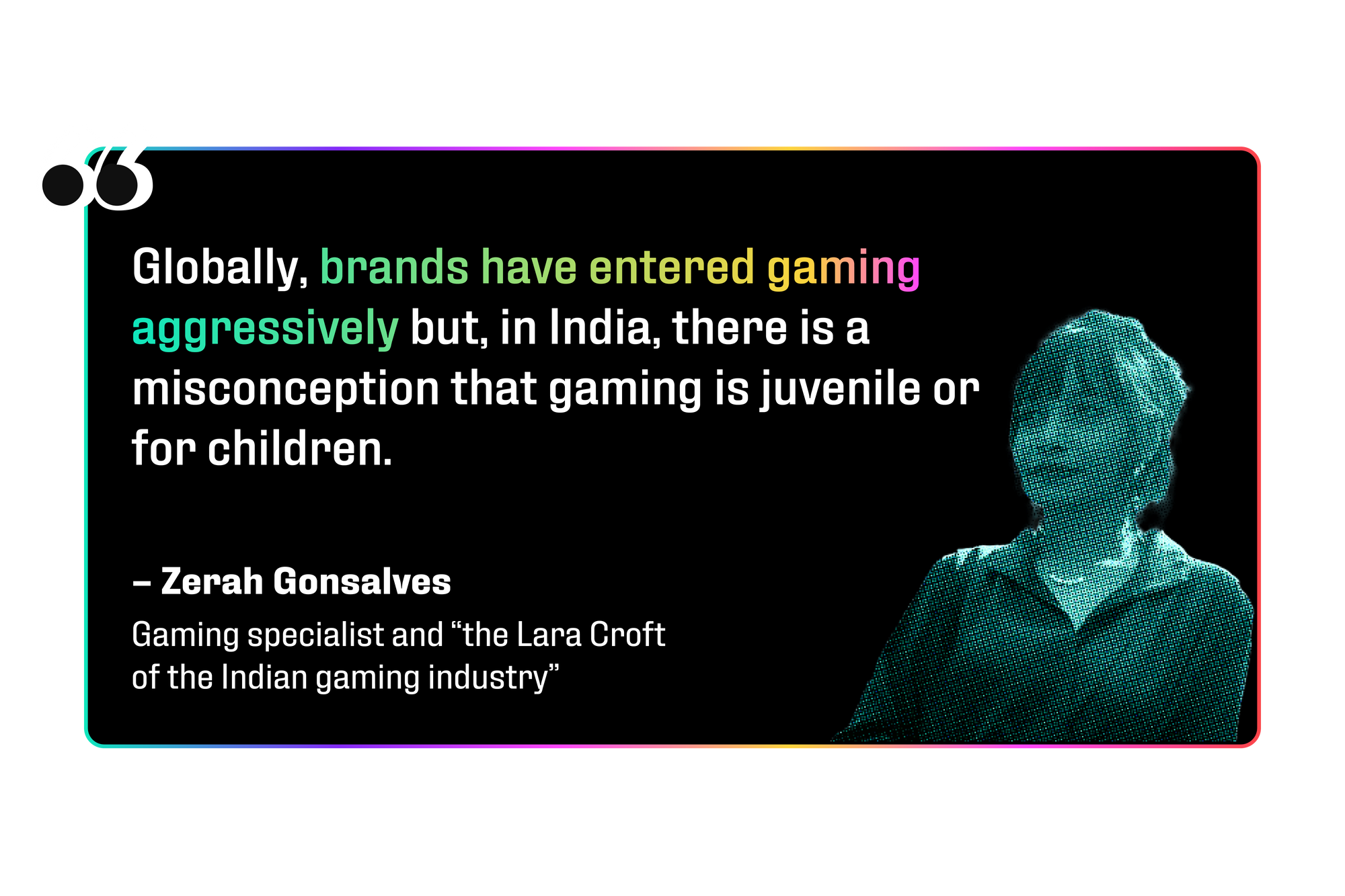Meet the real face of gaming in India — adults juggling deadlines, backaches, EMIs, and dopamine breaks.
TL;DR:
- 80% of gamers in India are between the ages of 18 and 45 — they’re adults with adult problems like dehydration, back pain and dry eyes, just looking to unwind after a long, hard day of work.
- Smart brands are embedding themselves in the gaming experience, positioning their products as powerups that complement a player’s lifestyle, not interrupt it.
- Nostalgia, wellness, and local culture can serve as gateways for brands looking to connect with gamers and create emotionally rich, resonant experiences.
—
In April, Battlegrounds Mobile India (BGMI), previously PUBG Mobile India, hosted its first virtual wedding for a couple who met on the app. If you're surprised that gamers — stereotyped as hoodie-clad teenagers huddled in dark rooms — are old enough to get married, it's time to burst your bubble. The Indian Gaming Report 2024 revealed that 50% of Indian gamers are between 18 to 30 while another 30% are between 31 and 45 years old.
In fact, players occupy the senior citizens category as well: back in 2023, gaming specialist Zerah Gonsalves hosted a gaming campaign with Mobile Premiere League (MPL) across old age homes to raise awareness about dementia. Recently, in January, Mahindra advertised its BE.06 electric vehicle on BGMI. Players could test drive the car in-game while a lucky few could even win the vehicle in a real-world giveaway. What started as pandemic-induced WFH-friendly downtime has evolved into an active lifestyle choice.

“Globally, brands have entered gaming aggressively but, in India, there is a misconception that gaming is juvenile or for children — this is far from the truth,” shares Gonsalves, also regarded as “the Lara Croft of the Indian gaming industry”. As more branded integrations flood gaming platforms, adult gamers — newbies no more — are also willing to invest in deeper storytelling and functional perks.
GAMING AS A RITUAL
Video game journalist Rishabh Sabharwal credits this to the ‘little treats mindset’: “Cosy mobile games like Candy Crush and FarmVille help people over 30 feel rewarded with little effort. Within the first 30 seconds of the game, you crush five lines of candy and the game calls you ‘amazing’, a minute later, ‘you are fantastic’. These players lead stressful lives and are seeking accomplishment at their jobs and in their family life; gaming gives them that feeling.”
He’s right: 66% of Indian gamers play to relax and de-stress, and the average time spent on casual games like Ludo King and Candy Crush increased by 20% between 2023 and 2024 because “older gamers can't invest four-five hours on a game, they prefer quick 30 minute plays,” Sabharwal notes. He adds, players between 45 to 60 care little about refresh rates or the latest Snapdragon processor. For them, playing Subway Surfers, Teen Patti or BGMI on their phone with glitchy WiFi is enough.

For Indian parents too, the once-derogatory outlook to gaming is shifting. The HP India Gaming Landscape Study 2023 showed that 40% of young parents have a positive attitude to playing as skill development while 42% see gaming as a hobby. Esports and entertainment company NODWIN Gaming is already targeting these older demographics and planning a father-son gaming tournament in partnership with apparel brand Flying Machine (whose average customer is aged 28 to 30). They also plan to bring in millennial influencers to engage Gen Alpha gamers (born between 2010 and 2024) by teaching them nostalgic titles like Space Invaders and Felix the Cat.
Nimish Raut, global head of partnerships and special projects at NODWIN, is already bridging this gap in his personal life. “Instead of buying my kids the latest Nintendo Switch 2, I got them a vintage Game Boy so we could play Mario and other games that I grew up with together,” he shares. Similarly, new-age companies like Play Retro India offer Retro Game Boxes that stock 90s games like Tekken, Street Fighter and Mustafa but are priced accessibly at ₹2,000.
HOW TO MARRY CULTURE AND INNOVATION
Most marketers are yet to recognise adult gamers as a distinct target demographic — let alone tap into the goldmine they represent. But some publishers and brands have been early to catch on and are already moving to meet this group’s growing appetite. Enter eyewear retailer Lenskart: at the 2023 BGMI Champions Cup, the brand partnered with NODWIN Gaming to set up wellbeing activations with blue light-protected eyewear tailored for gamers who tend to be more vulnerable to dry eyes, headaches and myopia due to high screen time. “As per the brand, these glasses reduce the impact on the eyesight by 30% to 40% and are ideal for adults playing video games," Raut shares.
The intersection between wellness and gaming is a space wide open for brands that pay attention. A 2024 global study found that excessive screen usage increases the likelihood of neck pain by 82%. To address these posture-related risks, since 2019, furniture company Secretlab has joined Riot Games’ League of Legends esports events annually as the official chair partner while American furnishings company Herman Miller and software brand Logitech introduced a gaming chair with a cooling foam and enhanced adjustability in 2020. CyberPower PC India, known for its gaming set-ups that have become the go-to choice for Indian gamers, is also exploring functional partnerships. “The first product tie-up is with an ergonomic chair brand that helps gamers’ posture and provides the right arm rest. Maybe we could also explore curved monitors or focal-length adjustable eyewear that make it easier for 45+ gamers with near-vision issues,” shares Vishal Parekh, chief operating officer at the PC brand.

The real lesson here for Indian brands is how to marry culture and innovation. “Green Soul is the most popular gaming chair in India but older gens love [durable seating brand] Nilkamal. Imagine if a nostalgic brand like that partners with a gaming chair to combine comfort with familiarity,” muses Sabharwal. Additionally, the success of Pune-based Nodding Heads Games’ award-winning mythological title Raji: An Ancient Epic, proved that Indian gamers have a growing appetite for culturally-relevant experience. Sabharwal explains that older players are drawn to localised, India-first narratives because they’re keen to learn about their heritage. So, could pickle brand Mother's Recipe work with Krafton’s India-local puzzle game Spice Secrets to devise an in-game scene where players have to collect regional pickle ingredients? Yes. And yum.
POWERUPS AND SIDE QUESTS
Globally, savvy brands are embedding themselves into the gaming experience — positioning their products as powerups and side quests that complement a player’s lifestyle. Japanese Boost Noodle created caffeinated ramen, while liquid water enhancer MiO sponsored a Fortnite tournament with hydration breaks emphasising the importance of electrolytes while gaming.
A smart brand wouldn’t commit the cardinal sin of interrupting or distracting a plugged-in gamer — it would seamlessly embed in their lifestyle. Srinjoy Das, the associate director at BGMI's publisher Krafton India agrees: “As the adult gamer grows, brands should create utility-based campaigns that go beyond branding and enhance the quality of gameplay whether it is through tech-infused wearables or creating cultural and wellness integrations within gaming ecosystems.”

For instance, Indian women are prone to iron, magnesium and zinc deficiencies when they cross their 30s. “Supplement brands should partner with strategy and memory games like chess that are popular among older women. They often play these to exercise their cognitive strength and that is a good reminder to invest in their health,” Gonsalves says. “In fact, walking pads and workout equipment should have achievement-based rewards with games. Maybe if you complete a certain number of steps you can access an exclusive skin in the game; this gamifies a practice that older players already love.”
Even brands distant from gaming can craft relevant campaigns that make gamers feel seen. Take Gillette: in 2022, the brand (whose average user is between 18-34) launched limited edition BGMI-themed razors that came with smartphone pop sockets, fulfilling the brand’s promise of “better grip” even outside personal care routines.
NO ‘COOL’? NO PROBLEM
Even sectors like public health, insurance, and banking (that have limited cool factor, but do have huge older audiences) can capitalise on India’s penchant for gaming. Just look at Japan: the government has created an interactive map of its flood control facility on Minecraft where players can trigger pumps, open floodgates and learn about disaster prevention firsthand. With rising climate risk, the Indian government and BGMI could co-create seasonal smog visuals that players can clear by choosing pollution-controlled vehicles, avoiding firing in missions or wearing health-protective gear.
In 2022, JPMorgan Chase became the first major financial name to enter a gaming metaverse. HSBC and Standard Chartered followed suit and acquired land in metaverse game The Sandbox to engage esports communities. In India, where adults are increasingly concerned with boosting their financial literacy, Kotak Bank could take cue and team up with mystery game Detective Dotson to let players crack fraud cases and unlock perks like Kotak’s premium lounge access or trial credit cards.

In 2023, Roblox launched an immersive 3D Career Center for aspiring employees to explore company culture, complete interview prep challenges and attend live events. This innovative approach attracted over 5 million visits, engaged users three to four times longer than a traditional careers site, and transformed the recruiting process. Perhaps Naukri.com could take inspiration from Roblox?
INDIAN ADULTS GAME A LOT – OK. NOW WHAT?
- Meet gamers where they are — Don't exhaust your marketing budget on social media. Instead, get more creative with digital-first campaigns. Recognise that India’s gaming renaissance has gone well beyond teenagers — even a 35-year-old is slaying dragons and crushing candy.
- Smart brands embed, not interrupt — From in-game EV test drives to wellness-driven eyewear and father-son tournaments, utility-led integrations that improve gameplay win over passive ads.
- Be picky with your partner — Instead of chasing big-name games, choose thoughtful collaborators in unique, emerging niches that promise older gamers a relevant and local cultural connection.
- Blend break-time with bite-sized productivity — As the ‘little treats mentality’ grows, craft strategies that make adult gamers feel like winners. Combine recreation and reward with branded dopamine kicks.
